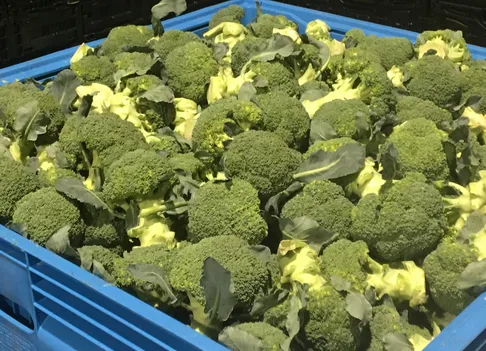Australia loses an estimated 18-22 per cent of produce, due to inefficiencies along the supply chain, according to Produce Marketing Association Australia-New Zealand (PMA A-NZ)'s State of the Industry report.
The annual study, commissioned Ernst & Young, found that those losses were equivalent to $1.72 billion. The company's Partner, Economics, Regulation and Policy Ruth Ahchow says six key supply chain performance drivers were uncovered; facilities, inventory management, transport, information and communication, workforce, and supply and demand.
"We found that supply chain costs are about 55 per cent of total product costs," she said. "Therefore, inefficiencies across the supply chain have a huge impact in terms of overall product costs. For example, we waste fresh produce along every point of the supply chain, and about 20 per cent of produce is wasted throughout the supply chain."
She added that fresh produce spends up to 50 per cent of its shelf-life in transit and the report identifies that quality is rated as number one for satisfaction with fruit and vegetables. Within that, appearance, taste and size and shape are the top three elements of quality.
"There is a huge role in terms of temperature and transport conditions to deliver the freshness and quality we need at point of sale," Ms Ahchow explained. "Also, supply chain performance can impact on consumer trust and awareness. The key thing that we found that drives that long-term value, is the collaboration of relationships along the supply chain. So, being able to share information and data to better understand consumers and better understand demand is really important; having information flowing back that influences the quality and quantity of a product, and how it is produced. I think at the moment the current market is production and product-based, rather than market-driven, so there's a mismatch with what the consumer wants. For example, growers harvesting early to make a better profit."

It was one of two main themes explored in the report, as COVID-19 escalated midway through the research, and commanded a lot of attention. With Hort Connections cancelled due to the lockdown restrictions, the second State of the Industry report was delivered via an online presentation. The forum also heard insights from Craig Taylor, General Manager Fresh Produce at Coles; Patrick Vizzone, Head of Food, Beverage and Agribusiness, International at ANZ; and PMA ANZ CEO Darren Keating.
"The supply chain and its performance affect everyone in the fresh produce industry," Mr Keating said. "We are a really unique industry, from the point of view that up to 50 per cent of the shelf life is spent in the supply chain. We need to think of that in terms of opportunity that it can bring. The key drivers impacting supply chain efficiency are wastage, quality, pricing, profit, visibility and trust. One of the things that we have seen throughout the report is that the overlay of consumer demand and opportunities in the supply chain really point to large trends and ways to work towards positive outcomes. It will be different for every supply chain."
The report also explored issues such as quality and sales. Ms Ahchow says that while consumers may not always like seeing packaging in retail stores, in terms of fresh produce, it delivers better "Point of Sales" outcomes in terms of improving quality and freshness.
"The other thing in terms of this new 'COVID-world', something in a package is less likely to be having something going wrong with it along the supply chain," she said. "There's also (the customer) picking up and testing that things like (loose) avocados are ripe then putting it back again. I think we have had enough information out there that less packaging is better, and being able to ensure that we have the level and balance between retail (needs) and being able to ensure we have a sustainable product."
 Mr Taylor gave a supermarket's perspective and says that pre-COVID there was various views from customers surrounding the packaging and whether the produce is going to be used as a convenient snack or part of a meal at home. He suggested producers and retailers need to re-think the way produce is marketed.
Mr Taylor gave a supermarket's perspective and says that pre-COVID there was various views from customers surrounding the packaging and whether the produce is going to be used as a convenient snack or part of a meal at home. He suggested producers and retailers need to re-think the way produce is marketed.
"We need to get used to using the term 'home life' as opposed to 'shelf life' in our vernacular," he said. "I think the shelf life is largely a retail statement, but you don't get measured on shelf life at home; you get judged on how long it lasts in the fridge or fruit bowl. There are some advantages of packaging but we also know in my market (Coles), when we do customer research, whether it is claimed behaviour or otherwise there are cues for customers wanting to buy loose and fresh produce. I would say less, but better packaging is needed. Where we need to find relevant packaging, we need to have better and more recyclable solutions."
For more information: click here
